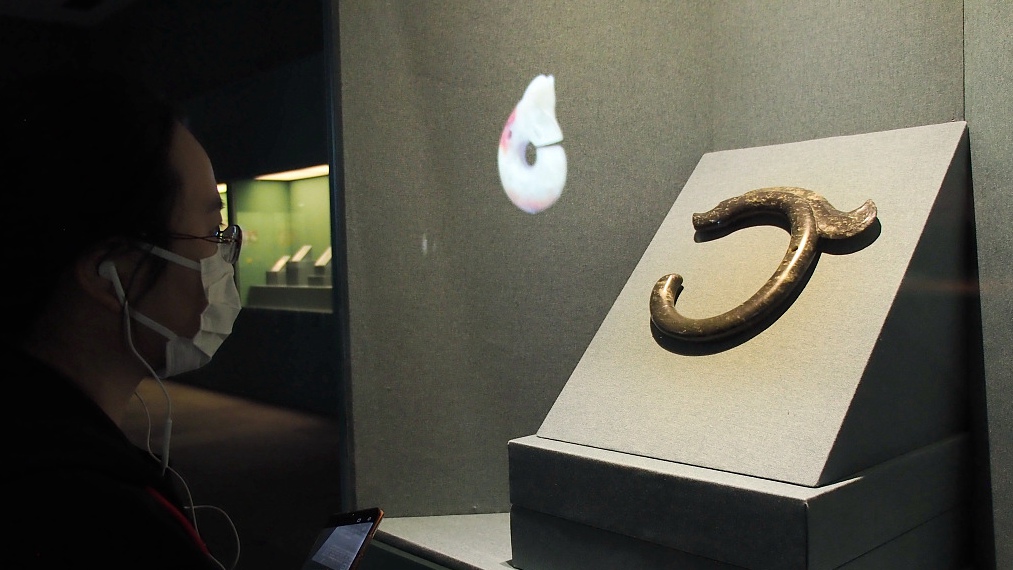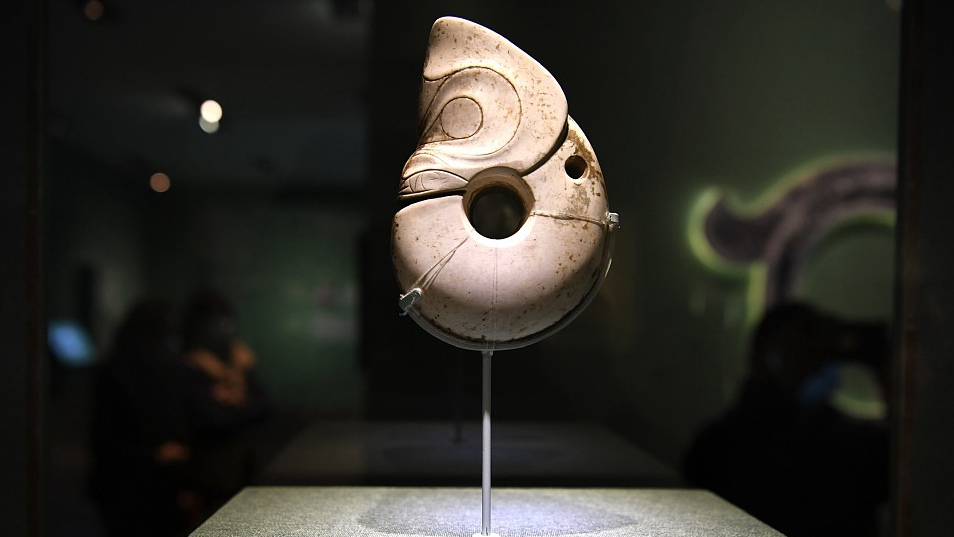
"An Exhibition of Archaeological Finds of Hongshan Culture" opened at the National Museum of China in Beijing on Saturday, featuring more than 160 treasured items, such as C-shaped jade dragon and other representative cultural relics of Hongshan culture.
Dating back about 5,000-6,500 years, the Hongshan culture is one of the most famous Neolithic archaeological cultures in the Liao River basin in northeast China. It is one of the important sources of the diversified and integrated Chinese civilization and occupies a unique position in the 5,000-year Chinese civilization.
Hongshan burial artifacts include some of the earliest known examples of jade working. The Hongshan culture is known for its jade pig dragons and embryo dragons. According to the National Museum, the exhibition has more than 160 cultural relics on display, including the famous jade pig dragon, showing the basic vein and unique connotation of Hongshan culture in a comprehensive way. As enters the exhibition hall, one of the first items on display is the jade pig dragon from Liaoning Provincial Museum.

The jade pig dragon, a type of jade artifact from the Hongshan culture of Neolithic China. /CFP
The jade pig dragon, a type of jade artifact from the Hongshan culture of Neolithic China. /CFP
The second section of the exhibition shows the stone tombs of the Hongshan culture, as well as the shape, material, technology and ways to embellish jade items.
The Niuheliang archaeological site is a unique ritual complex associated with the Hongshan culture. The exhibition not only features the Niuheliang site stone tombs but also a especially restored large central tomb.
The exhibition will last for three months and people can visit the museum by reservation online.
(Cover: Visitors watch a C-shaped jade dragon at "An Exhibition of Archaeological Finds of Hongshan Culture" at the National Museum of China, Beijing, October 17, 2020. /CFP)